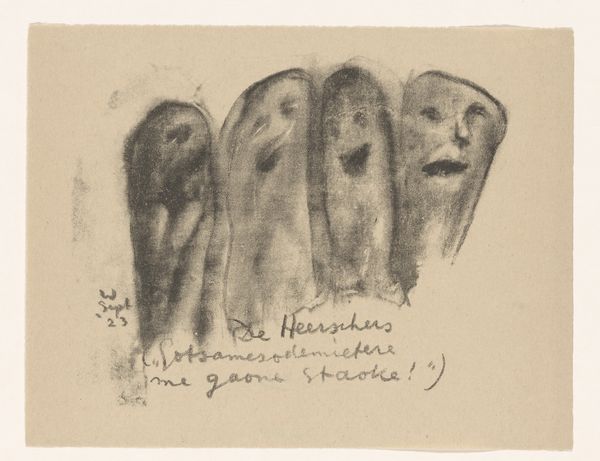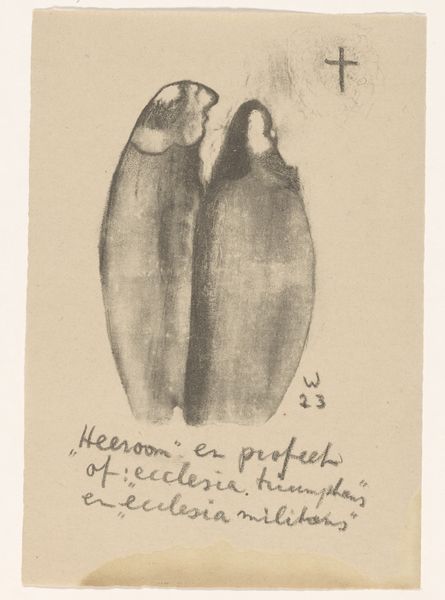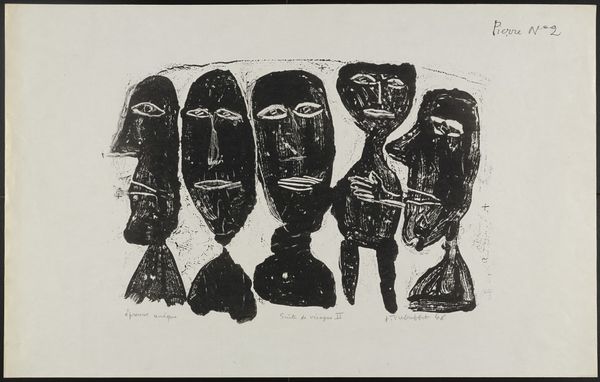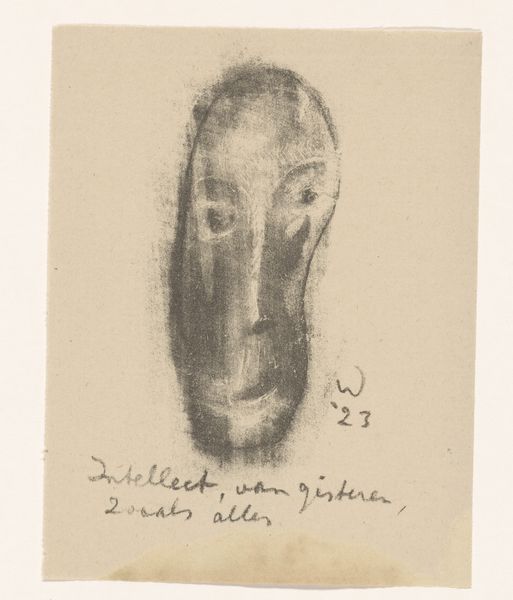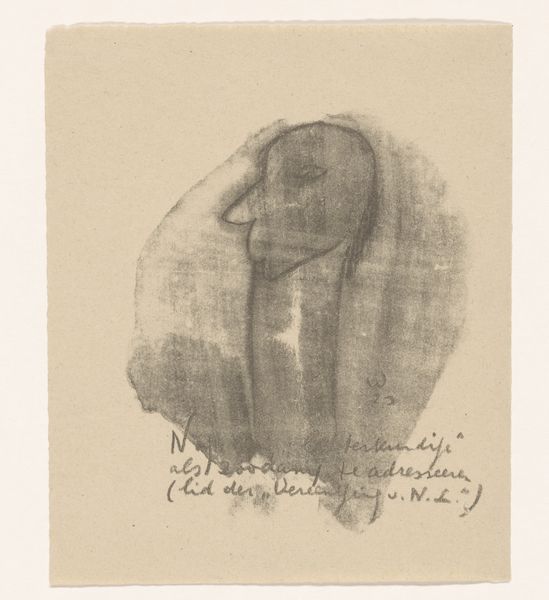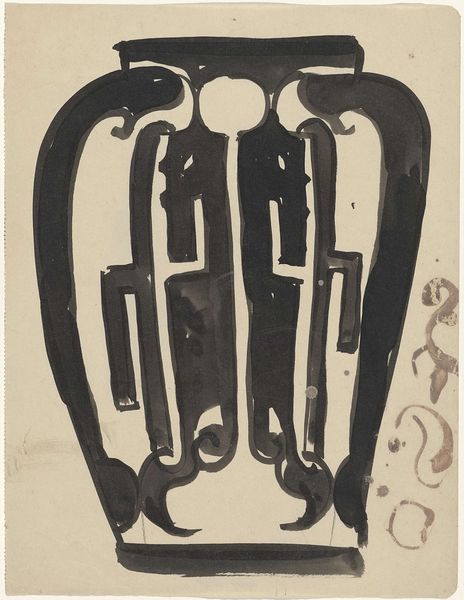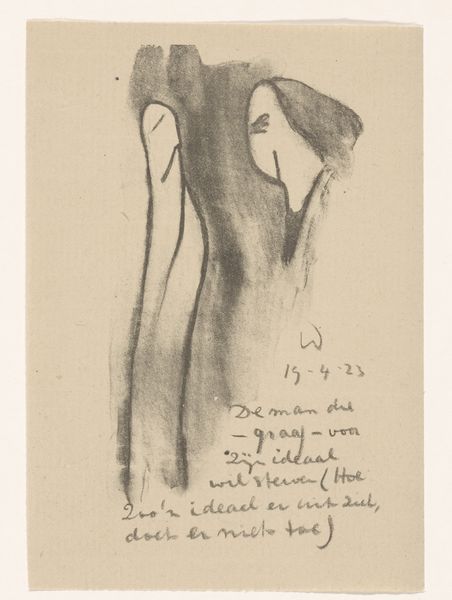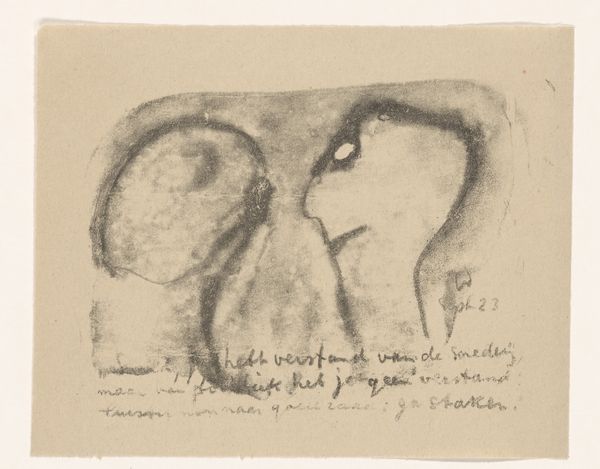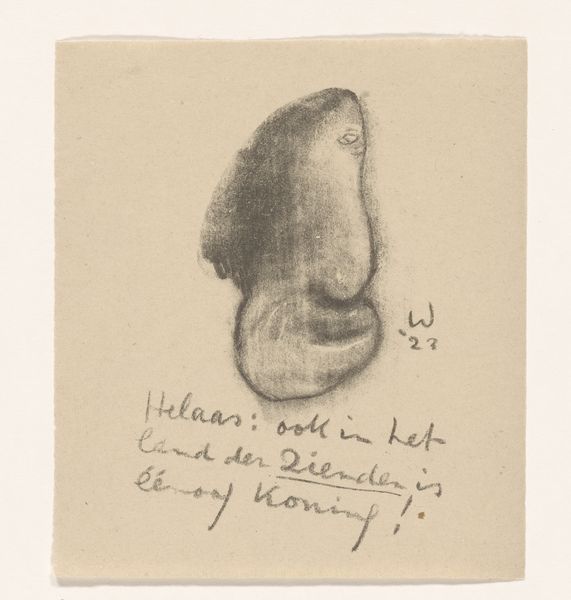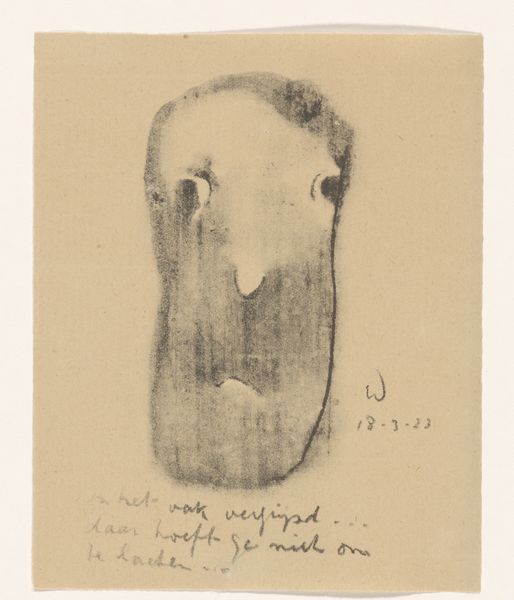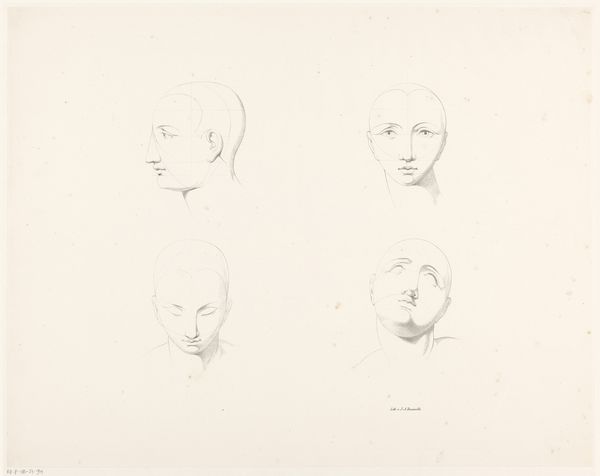
drawing, pencil
#
drawing
#
narrative-art
#
figuration
#
group-portraits
#
pencil
#
expressionism
Dimensions: height 215 mm, width 340 mm
Copyright: Rijks Museum: Open Domain
Curator: Welcome. Before us is "Five Figures on Labor Day" by Erich Wichmann, rendered in pencil in 1923. Editor: Immediately striking is the work's subdued mood, despite its purported theme of Labor Day. The pencil work is quite rough, almost as if it was rushed or obscured by some veil. Curator: That's insightful. The very material—the immediacy of pencil on paper—speaks to the political climate. Wichmann lived in a period of immense social and political upheaval. Labor Day was fraught with tensions, reflecting struggles for workers' rights and often state repression. Editor: How does the figuration play into this context? Curator: Notice how the figures aren’t distinct individuals, but rather archetypes, dehumanized nearly. Their forms seem molded—or perhaps burdened—by the weight of social expectation. The group almost lacks any sign of optimism associated with worker solidarity; this may not simply be a celebratory scene. Editor: I agree; the figures look almost spectral, existing within some vague limbo state that is emphasized by the hazy blending effect that comes with using graphite on paper. It really does look as though these laborers lack power as well as freedom within their forms. What is interesting is how we cannot immediately determine that these are even figures from our time looking back at it! It seems somewhat timeless which means there are constant cycles being repeated... Curator: Exactly! By deconstructing established ideals tied to class, and gender constructs. In addition to this Wichmann invites us into considering those complexities which include a reflection to contemporary experiences Editor: I suppose it reflects the labor behind such drawing through means beyond itself instead relying primarily within some conceptual framework itself. Curator: Indeed. These forms are vessels representing potential, but currently hollow. It emphasizes human experience through how its produced: materiality; therefore it emphasizes conditions within wider societal struggles while becoming an experience of labor within representation as a work about “Labor Day”. Editor: So then by making that production be an important piece, Wichmann then uses artistic exploration via media application through specific socio political conditions for the very conceptual foundations which form into a broader political statement concerning societal expectations involving oppression etc . Curator: Exactly; with close analyses like yours using methods considering “sociopolitical-historical approaches along material exploration we gain much fuller understandings than using limited lens” - it enables far expanded nuanced analysis where individual identity merges further to complex dialogues happening Editor: Fascinating how deeply entrenched are those links within sociopolitical landscapes into not also aesthetic output AND artistic conception that occurs throughout…thank you for enriching all the nuanced details while we explore together regarding "Labor day." Curator: An insightful end to our little stroll for a richer discussion around Vichmann.
Comments
No comments
Be the first to comment and join the conversation on the ultimate creative platform.
